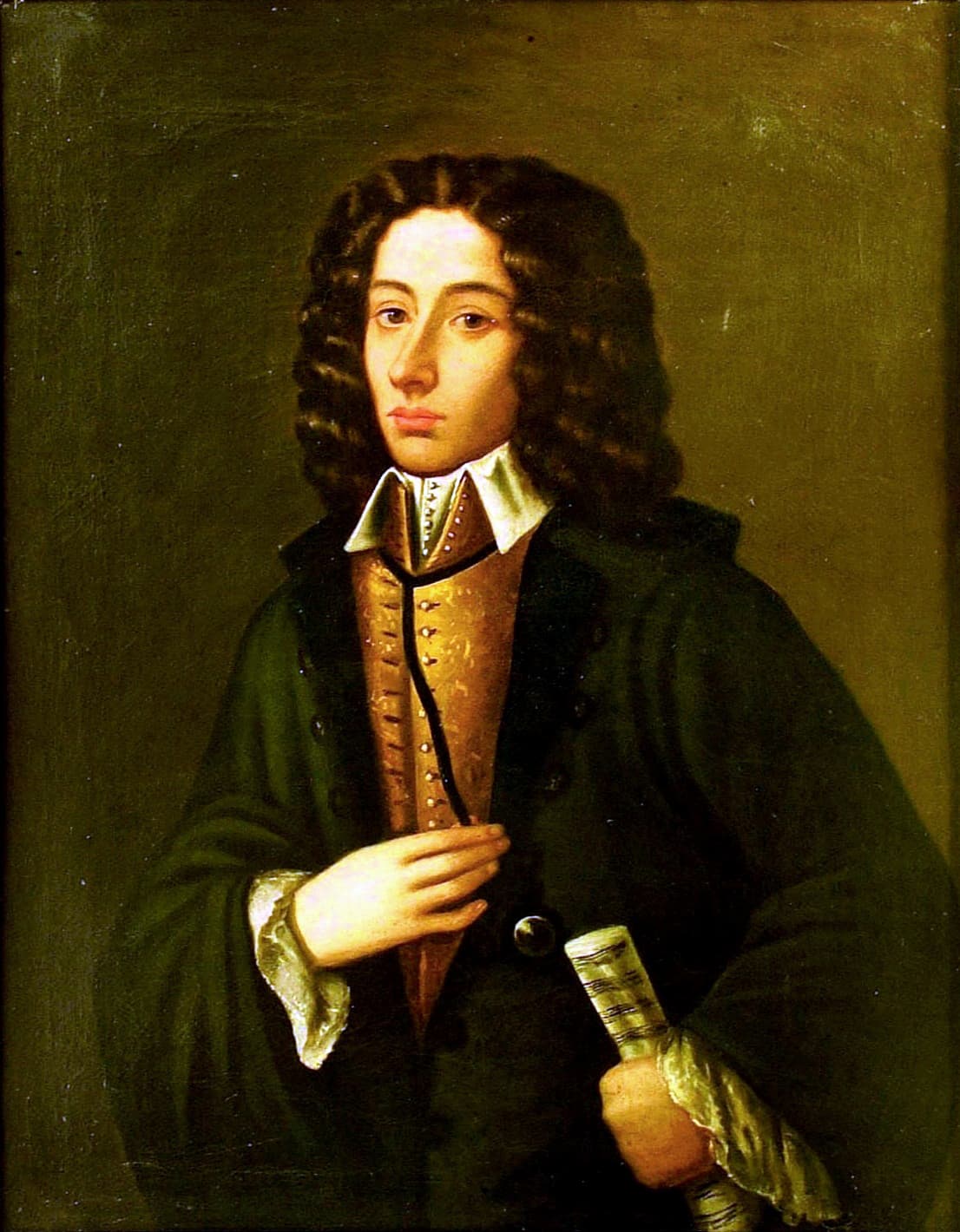Giovanni Battista Pergolesi died from tuberculosis at age twenty-six, on 16 March 1736. He was first buried in a common pit next to the cathedral at Pozzuoli in Naples. His first biographer and friend installed a memorial tablet in the cathedral, and the composer’s remains and memorial tablet were transferred to a side chapel of the cathedral in September 1890.
Giovanni Pergolesi: La Serva Padrona (excerpt)
Reputation
A scholar writes, “Pergolesi’s reputation has undoubtedly benefitted from the brevity of his life.” During his lifetime, Pergolesi was exclusively famous in Neapolitan and Roman circles. As he clearly had not yet attained full maturity as a composer, despite leaving a handful of unforgettable compositions, his musical style was called revolutionary. The highly romanticised accounts of his life were written in the late 18th and 19th centuries, and this almost “universal fame he attained posthumously represented a new phenomenon in music history.”

Giovanni Pergolesi
Shortly after his death a collection of four of his cantatas was published, the first time such compositions had been printed in Naples. A second edition quickly followed, and Queen Maria Amalia of Naples ordered La serva padrona to be performed. Pergolesi’s fame was spread by performances of his church music, and the Stabat mater, first published in London in 1749, became the most frequently printed single work in the 18th century.
Giovanni Pergolesi: Concerto armonici No. 3 in A Major (I Musici)
Health
Giovanni was the only one of four siblings to actually survive infancy. Both of his parents died young, and his confirmation on 27 May 1711 took place at the age of sixteen months. This was most unusual as “it was not customary to confirm children before the fifth birthday.” This break with normal practice was due to his being a sickly child and not expected to live. Possibly, he was already suffering from tuberculosis.

Giovanni Battista Pergolesi
His first biographer also suggested that Pergolesi had a deformed left leg and that he limped. He took this as a sign of the disease known in Italy as “Spina Ventosa,” or tuberculosis. By 1735, his health was failing rapidly, and on medical advice, the composer moved into the Franciscan monastery in Pozzuoli. Knowing that the end was near, he handed over most of his possessions to his aunt and housekeeper and worked on his last work, the Stabat Mater.
Giovanni Pergolesi: Adriano in Siria, Act III
Stabat Mater
A multitude of composers have set the medieval Stabat Mater to music. The authorship of this poem, meditating on the Virgin Mary’s agony and sorrow at the foot of the Cross, is uncertain. Generally, it is considered to be the work of Jacapone da Todi, and early settings by Josquin des Prez and Palestrina are through-composed and show no break in continuity.

Giovanni Pergolesi’s monument in Jesi
Only in the later part of the Seventeenth Century did the poem come under the influence of cantata form, and instrumental accompaniments were added. As such, the text was treated as a succession of short movements. A setting by Scarlatti, which was to be replaced by the Pergolesi setting, is scored for soprano and contralto castrati with string orchestra.
Giovanni Pergolesi: Sinfonia in F Major (Orchestra da Camera di Santa Cecilia; Alessio Vlad, cond.)
Detractors

Giovanni Pergolesi’s Stabat Mater
The Stabat Mater had been commissioned by the Archbrotherhood of Cavalieri della Vergine de’ Dolori, a group of Neapolitan nobles. Pergolesi received a down payment, and when a friend visited him in the monastery, the composer was confined to bed with a high fever while working on the composition. Writing for an audience which would be well acquainted with cantata style greatly influenced Pergolesi’s setting, “and a few days later the work was complete.” However, the composer’s health rapidly declined, and he died shortly thereafter.
To be sure, Pergolesi had his detractors, foremost among them the Italian composer Giovanni Paisiello. A good many remarks were squarely aimed at damaging Pergolesi’s reputation, and Paisiello even reset the libretto of La serva padrona. In the event, Paisiello claimed that the Stabat Mater had not been Pergolesi’s final composition but dated from an earlier time. A later theory, perhaps inspired by Mozart’s Requiem Mass, which was completed by his student Süssmayr, suggested that Leonardo Leo had completed the Stabat Mater. Thankfully, most of these theories have been squarely laid to rest.
For more of the best in classical music, sign up for our E-Newsletter
